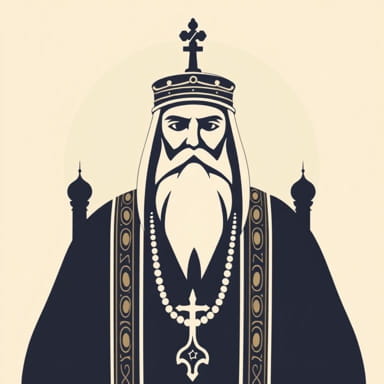In the final chapter of the Islamic Caliphate, one name stands out as a poignant symbol of the end of a centuries-old institution: Abdulmejid II, the last Caliph of Islam. His reign marked the conclusion of a spiritual and political lineage that traced back to the Prophet Muhammad. While he held no temporal power, Abdulmejid II represented the cultural and religious identity of millions of Muslims. The abolition of the caliphate in 1924 by Mustafa Kemal Atatürk marked not just a political transformation in Turkey, but a seismic shift in the Islamic world. This topic explores the life, legacy, and significance of the last Caliph of Islam and the historical processes that led to the demise of the caliphate system.
The Historical Role of the Caliphate
Origins and Meaning
The caliphate began shortly after the death of Prophet Muhammad in 632 CE. The first Caliph, Abu Bakr, was selected to lead the Muslim community as a political and religious successor to the Prophet. The institution served not just as a government but as a central figure in unifying the ummah (Muslim community) under a common authority. Over centuries, the caliphate evolved into a complex entity, shifting between dynasties such as the Umayyads, Abbasids, and finally the Ottomans.
The Ottoman Caliphate
The Ottoman Empire assumed the title of Caliph in 1517 after Sultan Selim I conquered the Mamluk Sultanate and claimed religious leadership over Sunni Islam. The sultans of the Ottoman Empire held the title of Caliph along with their imperial duties, blending both secular and religious authority. This dual role continued until the empire’s collapse after World War I, setting the stage for major political and religious change.
Abdulmejid II: The Last Caliph
Background and Early Life
Abdulmejid II was born on May 29, 1868, in Istanbul, during a time of political turbulence and reform in the Ottoman Empire. As a member of the royal family, he received a Western-style education alongside traditional Islamic teachings. He was known for his interest in art, literature, and science, and maintained a cultured and refined lifestyle even during the waning days of the empire.
The Abolition of the Sultanate
After World War I, the Ottoman Empire was dismantled by the victorious Allied powers. In 1922, the Grand National Assembly in Ankara formally abolished the sultanate, ending over 600 years of Ottoman rule. Sultan Mehmed VI was deposed and went into exile. However, the assembly chose to retain the caliphate in a symbolic form, and Abdulmejid II was elected as Caliph on November 19, 1922.
A Symbolic Role
Unlike his predecessors, Abdulmejid II did not wield political power. He resided in Istanbul and performed religious and ceremonial functions. He was respected by many Muslims worldwide and was seen as a unifying figure. However, his position was precarious in a rapidly secularizing Turkey under Mustafa Kemal Atatürk’s leadership.
The Abolition of the Caliphate
Secular Reforms in Turkey
Mustafa Kemal Atatürk sought to transform Turkey into a modern, secular republic. He believed the caliphate was incompatible with the new state’s vision. A series of radical reforms were implemented: religious courts were dissolved, the Arabic script was replaced with the Latin alphabet, and Islamic institutions were curtailed.
The Final Blow
On March 3, 1924, the Turkish Grand National Assembly officially abolished the caliphate. Abdulmejid II was deposed and expelled from Turkey along with members of the Ottoman dynasty. He went into exile in France, marking the end of a nearly 1,300-year-old institution. The decision sent shockwaves through the Muslim world, triggering debates and discussions about Islamic identity, governance, and the future of pan-Islamism.
Life in Exile
Life in France
After his expulsion, Abdulmejid II settled in Nice, France. Despite financial hardships, he continued to live with dignity and maintained correspondence with Muslim leaders and intellectuals. He remained a respected figure and symbol of Islamic unity, though his ability to influence events was limited.
Death and Legacy
Abdulmejid II passed away on August 23, 1944. Initially, his body was not allowed to return to Turkey, and he was buried in Medina, a city of deep Islamic significance. His death symbolized the fading memory of the classical Islamic caliphate and the emergence of a new political landscape in the Muslim world.
The Impact of the Caliphate’s Abolition
Responses from the Muslim World
The abolition of the caliphate led to mixed reactions across the Islamic world. Some leaders, like King Hussein of the Hejaz, expressed interest in reviving the caliphate. Movements in India, Egypt, and other Muslim-majority regions debated the future of Islamic leadership. However, no consensus was reached, and no effective successor emerged.
Rise of Nationalism
With the fall of the caliphate, nationalist ideologies became more dominant in Muslim countries. Rather than a unified ummah, Muslim nations began to focus on individual sovereignty and identity. This shift played a significant role in the development of the modern Middle East, North Africa, and South Asia.
Legacy in Modern Times
Today, the idea of a caliphate remains a topic of discussion in political and religious spheres. While some groups have attempted to revive the concept, their approaches and legitimacy have been widely contested. The story of Abdulmejid II serves as a historical reminder of the complexities involved in unifying religious and political authority in the modern age.
The legacy of Abdulmejid II, the last Caliph of Islam, is one that encapsulates the tension between tradition and modernity. As the final representative of an institution that once united a vast and diverse population under one spiritual leader, his life marks the end of a significant era in Islamic history. The caliphate’s abolition was not merely the end of a title but the transformation of Islamic political thought. It opened the door to new interpretations of governance, identity, and leadership in the Muslim world. Though Abdulmejid II’s influence waned in exile, his symbolic importance continues to be acknowledged by scholars, historians, and communities seeking to understand the evolution of Islamic authority in the modern era.
